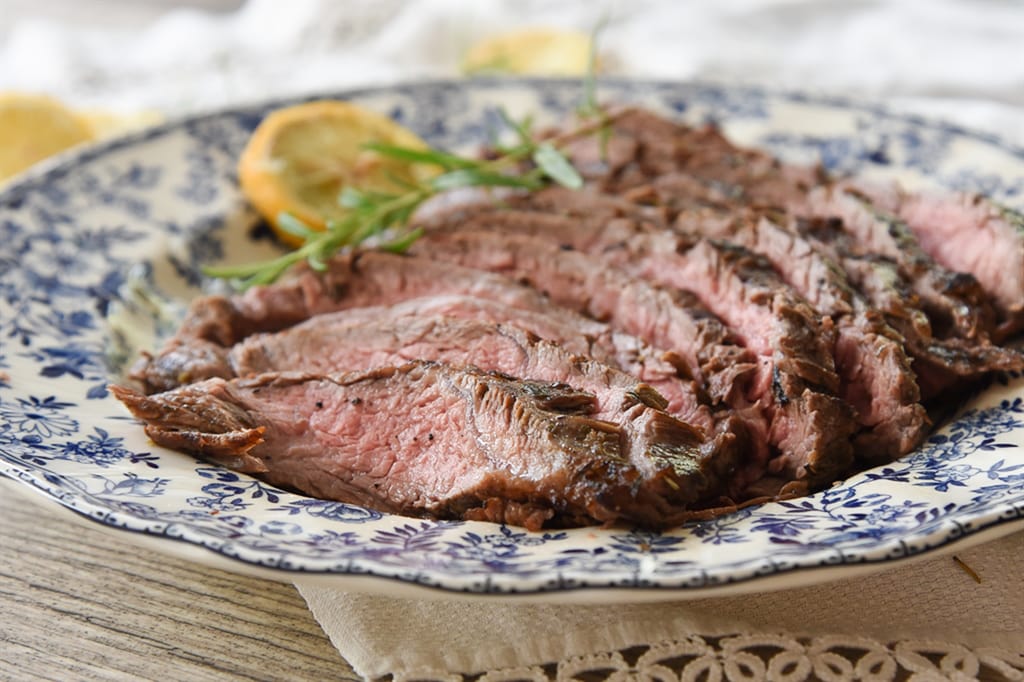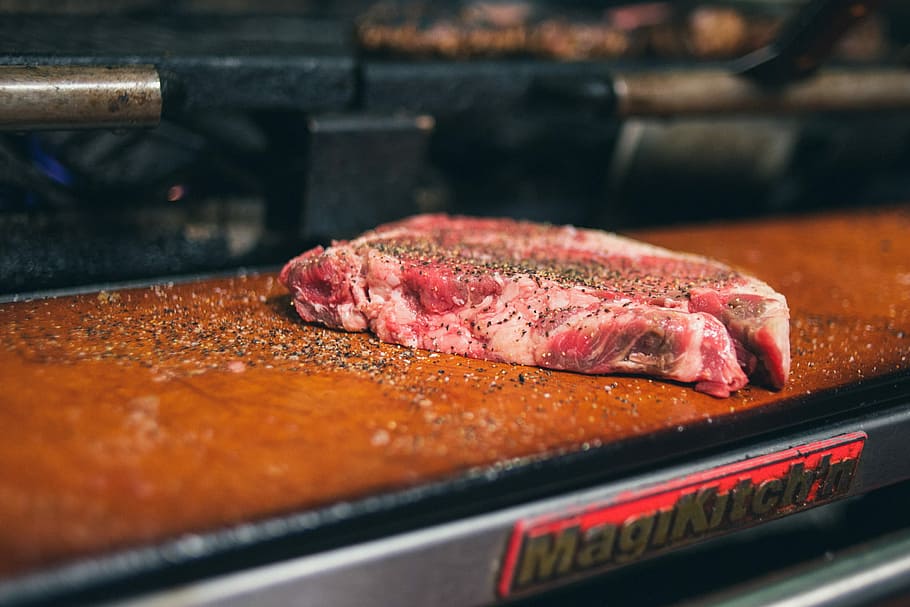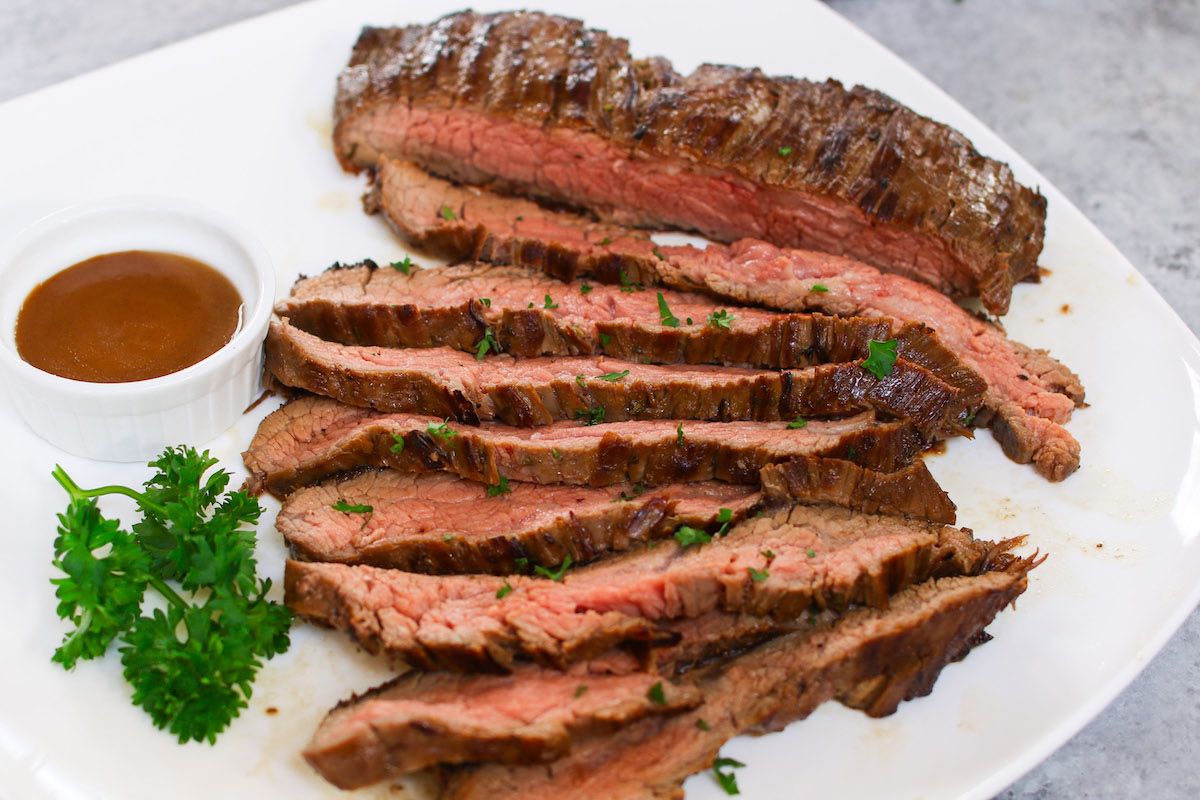
Reverse searing steaks is a popular method of cooking. This method allows for slow cooking of a steak at a low temp. The low-heat cooking method makes the steak evenly cooked, with virtually no overcooked meat. It is possible to cook the steak without resting it, which is great if you don’t have the time or patience to cook it the traditional way. This method is ideal for those who don’t like the taste or texture of overcooked meat.
The reverse searing process should be started before you heat a large cast iron skillet. This will accelerate the process. You should place a wire rack over a baking sheet and cover with foil. Use paper towels to pat dry the steaks, and season generously. This will ensure perfect searing in a short time. You will need a large pan to do this.

Start the process by taking a thick steak, and placing it on a parchment-covered baking sheet. To heat the meat, heat it between 200 and 265°F (93-125C). If you don’t have an oven or a grill, you can cook the steak using a closed-grill or closed gas range. You can also cook it on a stovetop or grill at home. Use a medium-thick, well-seasoned steak.
Give the steak a rest for a few minutes after it is done. This will allow the steak time to cool off and create a heat sink for the next sear. The steak will become dry and tough if it is not properly rested. It is important to properly rest your steak after cooking. This will ensure a delicious and well-done re-seared steak. Resting the steak after cooking will make it caramelize beautifully and prevent it from drying out in oven.
Cooking a steak that has been reverse-seared can be challenging. It is best to use a dual-phase unit. The first phase involves cooking at a low temp to raise the meat's internal temperature while leaving the outside uncooked. The second phase involves high temperatures to finish the steak, and give it a smoke-ring. This cooking method is very popular and can make steaks tender and crispy.

This is a great method to sear a steak. It is a combination of grilling and baking. It is a great way to achieve a perfectly cooked piece of beef, and is an excellent alternative to the traditional pan-searing method. The best thing about it is that it doesn't alter the meat's flavor. When the steak is properly cooked, it will taste more succulent and tender than if it was cooked at a lower heat.
FAQ
What should a novice cook do first?
For beginners, it is best to begin with something simple like pasta, rice or soup. You can learn how to cook by looking at a cookbook or watching a YouTube video. Cooking with friends is much more enjoyable. Have a group of friends cook, or cook together.
How Long Does It Take to Be a Chef? What is the average career track?
It takes five years to become a chef. This time you'll learn the basics of cooking and work as a cook assistant. When you finish your training, you can apply for positions as a line cook, sous chef, or executive chef. The average salary for a chef ranges from $25,000 to $60,000 per year.
How to become a chef
There are many paths to becoming a chef. Start by enrolling in a class at a vocational school or community college. Then, look into attending culinary school. A paid internship is another option.
How much does it cost for you to learn culinary arts?
Prices for studying culinary arts vary widely. A four-year degree usually costs around $40,000. A two-year associate's level degree can cost less than $5,000. Tuition rates vary depending on what program you choose. Public institutions are more expensive than private institutions.
Statistics
- under 10 Kids have been taught that there is special food just for them, and Fiese says that 10 percent of kids will throw a tantrum if they don't get the food they want. (washingtonpost.com)
- On average, chefs earn $58,740 a year, according to the BLS. - learnhowtobecome.org
- In the United States, the category is estimated at $23.2 billion annually and is growing faster than the market. (washingtonpost.com)
External Links
How To
How to make the perfect omelet
Omelets is one of my favourite breakfast foods. But how do you make them perfectly? There are many recipes and methods I tried, but none worked. So I wanted to share some tips and tricks so that you can make delicious, fluffy omelets every morn.
When making omelets, it is important to be aware that eggs can be temperamental. It is important that eggs are fresh from an organic market and kept cool until used. The yolks and whites will not form properly if they aren't kept cold enough. Your omelets will look strangely colored if this happens. If you plan to cook the eggs right away, it is best to use room temperature eggs.
Another tip is to separate each egg before adding them to the saucepan. Because this could cause your omelet to become curdled, you don't want any yolk to be mixed with any white.
The egg can burn if it is placed directly on the stovetop. Instead, place the egg in the microwave for 10 second before you put it in the skillet. The microwave heat cooks your egg just right, without it becoming too soft.
Next, let's discuss mixing the eggs. Mixing eggs together is important. You need to beat them well. You can do this by turning the bowl of your mixer upside down. Then, vigorously shake the bowl. This allows the air to be whipped and the egg to be mixed thoroughly.
The fun part begins - you need to pour the milk into your mixture. Mix half of the milk with the eggs. Then fold the eggs in half into the remaining milk. Do not be alarmed if there are still egg streaks visible. Once the omelet flips, these streaks will disappear.
After folding the eggs fold the pan onto medium heat. When the oil starts to hot, wait for the pan to cook. Once the oil begins to heat, add 1/4 cup butter and swirl the pan to coat it. Next, carefully open the lid and sprinkle salt into your pan. An additional pinch of salt will prevent the omelet form sticking to your pan.
Cover the pan once the omelet is formed and allow it to cool completely. Flip the omelet with a spatula, or flip it upside down. Cook the other half for another minute. Serve the omelet immediately by removing it from the pan.
This recipe works best with whole milk, but skimmed milk also works.